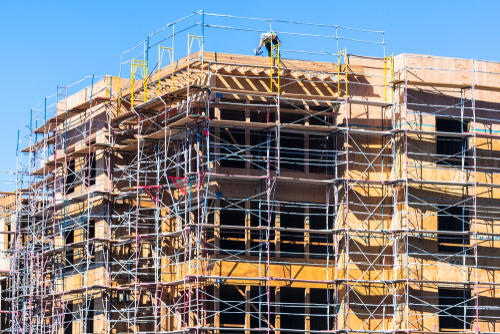Multifamily rents barely budged in July, rising an average of $2 to $1,754 from the previous month. Year-over-year growth was unchanged for the month, remaining at 0.7%, according to a new report from Yardi Matrix.
The slowdown in rent growth has been evident for some time, with annual rent increases remaining in the range of 0.5% to 1.1% for the past 20 months. Yardi Matrix reported that absorption of apartments has been strong, with more than 300,000 units being rented as of June of this year. If that rate continues for the full year, 2025 would mark the highest number of rental units absorbed since 2021.
But the level of apartments on the market continues to grow, which is restraining rents. As of July, about 1 million rental units were under construction, with about half in the pre-lease phase.
According to data from Apartment List, the national multifamily vacancy rate rose to 7.1% in July. It was the highest multifamily vacancy rate since Apartment List’s monthly index began in 2017.
Yardi was more optimistic about the outlook for the multifamily housing sector in the second half of this year. They maintain apartment deliveries will slow in the coming months due to the declining number of starts. That should relieve some of the supply pressure.
Get these articles in your inbox
Sign up for our daily newsletter
Get these articles in your inbox
Sign up for our daily newsletter
While Yardi has offered a relatively positive view of 2025, recent economic developments make the picture increasingly murky. Yardi forecasted that tariffs, which currently average 15% for about 40 trade partners, according to CNN, will have less impact on economic growth than originally feared. But the Federal Reserve has appeared to disagree with that assessment, maintaining interest rates at current levels because it is concerned tariffs could lead to higher inflation in the coming months.
Also, recent data from the Bureau of Labor Statistics showed the job market had slowed considerably in the past three months, leaving some analysts, including economists at Bank of America, to question whether the U.S. could possibly be heading toward stagflation. That happens when the economy must simultaneously deal with higher inflation, elevated unemployment and stagnant economic growth, which could put a damper on demand for rental properties.
Apartment List shared a recent report calling this a renter’s market, with overall rents in July falling 0.8% in the past year. While rent growth was positive to start 2025, rents turned negative for the past three months.
Yardi reported that the year-over-year rent growth rate was greatest in the Midwest and coastal metros. The highest rent growth rate was in Chicago, where year-over-year rents were up 4.1%, followed by Columbus, Ohio, which was up 3.9%, and Detroit, where rents grew by 3.5%.
At the same time, Yardi found that rents had turned negative in many Sun Belt metros, led by Austin, Texas, where rents were down 4.6% in the past year, followed by Denver, where rents decreased 3.9%, Phoenix, which was down 2.8%, Las Vegas fell 1.7% and Dallas contracted 1.5%.





















































